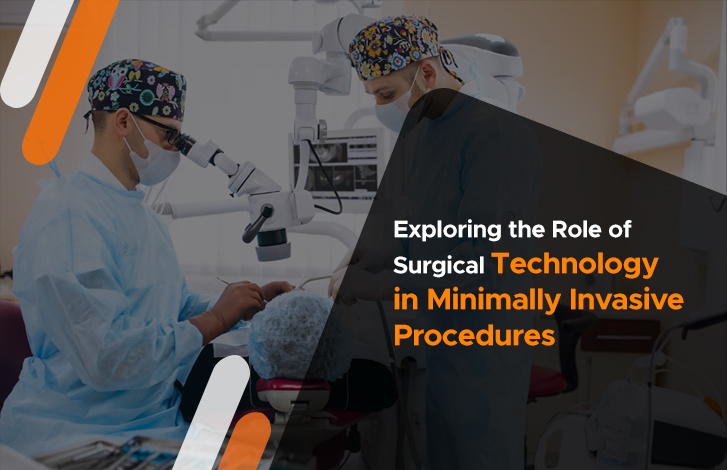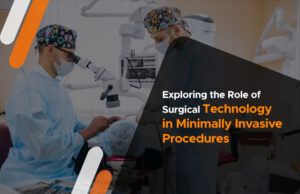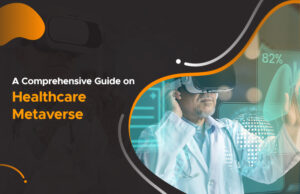Surgery is a vital part of healthcare but can also be invasive, risky, and costly. That’s why many surgeons and patients are opting for minimally invasive procedures, which require smaller incisions, less blood loss, and faster recovery times. But how do these procedures work? And what role does surgical technology play in them?
What is Surgical Technology?
Surgical technology is the field of health care that involves preparing and assisting with surgical operations. Surgical technologists, also known as scrub techs or operating room technicians, collaborate with surgeons, nurses, anesthesiologists, and other surgical team members to maintain a clean and orderly environment.
Surgical technologists have many responsibilities before, during, and after surgery. Some of their tasks include:
- Sterilizing the equipment and operating room
- Helping with preparing the patient for surgery
- Collecting, counting, and organizing the necessary surgical instruments and equipment for the operation
- Passing surgical instruments to the surgeon and their assistant.
- Helping to pull back tissues from the patient undergoing surgery
- Applying dressings to surgical sites
- Disposing of needles and gauze
- Preserving the operating room’s sterile conditions until the patient is transferred to the recovery room
Surgical technologists can also specialize in certain areas of surgery, such as cardiology, neurosurgery, organ transplantation, orthopedic, or pediatric and plastic surgery.
How To Become a Surgical Technologist and Why?
Surgical technologists need to complete a surgical technology program that can take from a few months to two years. They also need to pass a certification exam and complete continuing education to keep their skills up-to-date.
Becoming a surgical technologist can be a rewarding career choice for those who are interested in health care and surgery. Surgical technologists can enjoy working in a dynamic and challenging environment where they can make a difference in people’s lives by helping them heal faster and better.
Moreover, becoming a surgical technologist can also offer many opportunities for growth and advancement. According to the U.S. Bureau of Labor Statistics, the demand for surgical technologists is expected to grow by 6% from 2021 to 2030, which means there will be more job openings for those who want to pursue this profession.
What are Minimally Invasive Procedures?
Minimally invasive procedures are surgical techniques that use smaller incisions or natural openings in the body to access the organs or tissues that need treatment. These procedures can reduce trauma to the body, lower the risk of infection and complications, shorten the hospital stay, and speed up the recovery time.
Some examples of minimally invasive procedures are:
- Laparoscopy: A procedure that uses a thin tube with a light and a camera (called a laparoscope) to examine or operate on the abdominal or pelvic organs through small incisions.
- Endoscopy: A procedure that uses a flexible tube with a light and a camera (called an endoscope) to examine or operate on the digestive tract or other organs through natural openings such as the mouth or anus.
- Arthroscopy: A procedure that uses a thin tube with a light and a camera (called an arthroscope) to examine or operate on joints such as the knee or shoulder through small incisions.
- Robotic Surgery: A procedure that uses a computer-controlled device (called a robot) to perform surgery through small incisions with more precision and flexibility than human hands.
How does Surgical Technology Support Minimally Invasive Procedures?
Surgical technology plays a crucial role in supporting minimally invasive procedures by providing the necessary equipment, tools, and assistance to the surgeons. Some of the ways that surgical technology supports minimally invasive procedures are:
- Providing specialized instruments and devices that can fit through small incisions or natural openings and perform complex tasks such as cutting, suturing, cauterizing, or stapling.
- Preparing robotic surgical equipment and ensuring its proper functioning and calibration before and during surgery.
- Monitoring the vital signs of the patient and alerting the surgeon of any changes or problems.
- Handling specimens collected during surgery and sending them to the laboratory for analysis.
- Educating patients about what to expect before, during, and after surgery and providing them with postoperative care instructions.
What are the Benefits and Challenges of Minimally Invasive Procedures?
Minimally invasive procedures offer many benefits for both patients and surgeons compared to traditional open surgery. Some of these benefits are:
- Less pain and discomfort.
- Less blood loss and transfusion.
- Less scarring and infection.
- Less damage to surrounding tissues.
- Faster recovery and return to normal activities.
- Lower costs and hospitalization.
However, minimally invasive procedures also pose some challenges that require advanced surgical technology and skilled surgical technologists to overcome. Some of these challenges are:
- Limited visualization and access to the surgical site.
- Increased technical difficulty and learning curve.
- Higher risk of complications due to equipment failure or human error.
- Higher demand for specialized training and certification.
Conclusion
Minimally invasive procedures are becoming more popular among surgeons and patients because they offer many benefits over traditional open surgery. However, these procedures also require advanced surgical technology and skilled surgical technologists to ensure their safety and effectiveness. Surgical technology is an exciting and rewarding career that allows one to make a difference in people’s lives by helping them heal faster and better.







